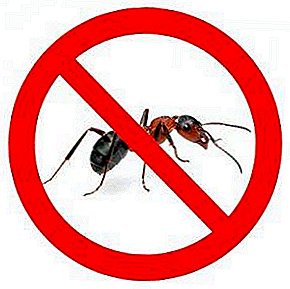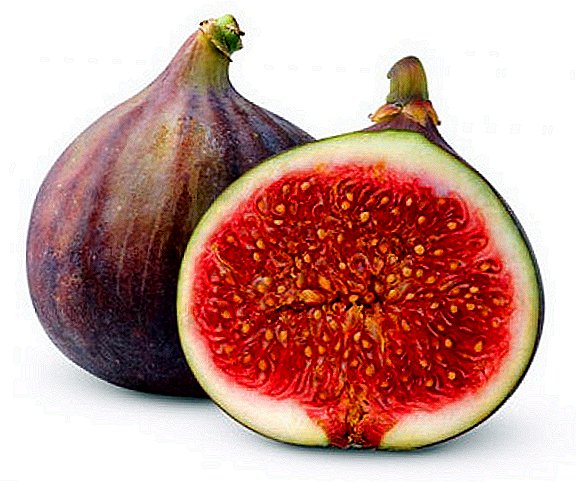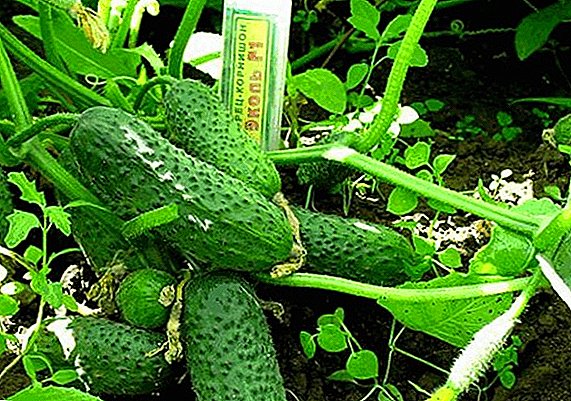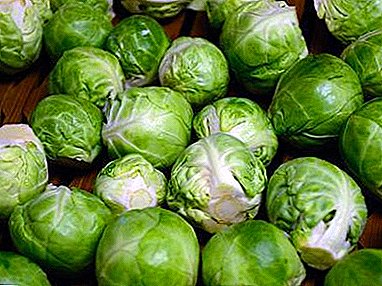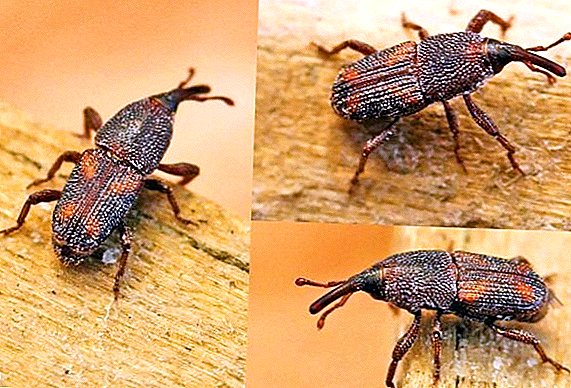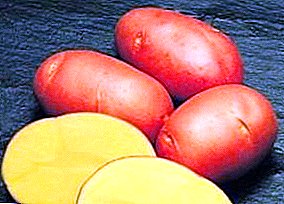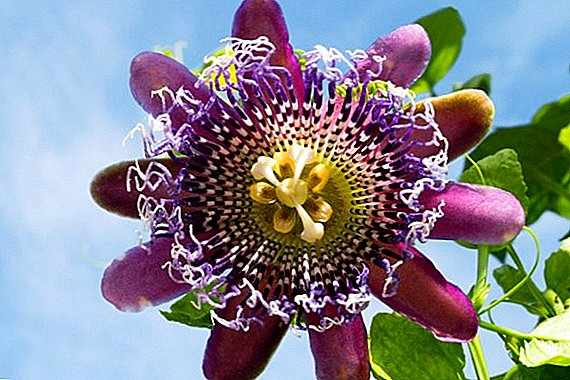 Passionflower - This is an amazing exotic plant. It belongs to the family of Passion Flowers and has more than six hundred species. This evergreen vine grows in the tropics of America, Australia, Asia and the Mediterranean. Passionflower is not the only name of the plant, it is also called passionflower, liana order bearer, cavalier star, passion fruit, granadilla, flower of the Lord’s passions.
Passionflower - This is an amazing exotic plant. It belongs to the family of Passion Flowers and has more than six hundred species. This evergreen vine grows in the tropics of America, Australia, Asia and the Mediterranean. Passionflower is not the only name of the plant, it is also called passionflower, liana order bearer, cavalier star, passion fruit, granadilla, flower of the Lord’s passions.
Passionflower has large flowers that resemble a star and have a bright color. This is a fast-growing plant, unpretentious in the care. Passionflower gives edible fruits and is used in medicine.
 Her medicinal properties are very interesting, but it is worth remembering that there is both benefit and harm from passionflower.
Her medicinal properties are very interesting, but it is worth remembering that there is both benefit and harm from passionflower.
How to grow this plant at home, how to care for it and how you can use it - this will be discussed further.
Interesting facts about passiflora
- Passionflower has healing qualities that are known for a very long time. They learned to use themselves for the benefit of even the Indians. They used the plant as a laxative, treated for diseases of the liver and eyes.
- In the 16th century, passionflower was one of the first flowers to come to Europe from South America.
- The drugs "Central-B" and "Novo-Passit" are made on the basis of passiflora extract.
- Edible fruits give about 60 types of passiflora. Among them are popular passion fruit, passionflower blue, banana passion fruit, sweet granadilla, giant granadilla.
- The leaves and roots of passiflora are used to treat hysteria, epilepsy and insomnia.
- Passionflower is used in the form of tea.
- Dried leaves of passiflora can be used as cigarettes.
Popular types of passiflor for growing indoors
 Growing passionflower at home is practiced very successfully. Virtually all types are suitable for this. But most often houses are grown with blue passionflora and winged passionflora. The plant is bred for decorative purposes, and some tend to get the fruit.
Growing passionflower at home is practiced very successfully. Virtually all types are suitable for this. But most often houses are grown with blue passionflora and winged passionflora. The plant is bred for decorative purposes, and some tend to get the fruit.
If you are thinking how to plant a passion fruit at home, then You can purchase the seeds of the popular winged passionflower. Its other name is Brazilian Passion Fruit. Its flowers are orange, stamens are elongated. The fruits are large and fragrant.
Also popular varieties of passion fruit are granadilla sweet and giant granadilla. The fruits of these plants have different sizes and color.
Another popular species are bay leafifaceae and banana passionflower. Gardeners have where to go in choosing a fruit exotic flower.
Important! Passiflora found a variety of colors. The most popular ones are blue and white, yellow and scarlet. But is it true flowers have this color, it will be possible to find out only after a year and a half.
Care for passiflora at home
 At home, passionflower grows very quickly. Vines require certain environmental conditions in which it will feel good.
At home, passionflower grows very quickly. Vines require certain environmental conditions in which it will feel good.
It is worth getting acquainted with the recommendations on how to care for passiflora at home, so that it grows healthy and brings sweet fruits.
When caring for passiflora, it is important to protect the plant from the cold. From the cold, the leaves of the plant become soft, turn yellow and fall off. The same happens with a lack of moisture.
Did you know? In the first year of passionflower forms its structure, increases the main shoots. Therefore, it is necessary for it to build a support to which the strongest shoots of the plant are attached. Secondary shoots are shortened annually by a third.
Lighting and temperature
To grow a passion fruit at home, it is necessary place in bright direct light. There is no need to prune the plant, but only on condition of sufficient moisture of the soil and air.
If the plant lives on a summer window, then on the hottest days it still needs a little pritenyat. If the passion fruit lives without the necessary light, in a light shade, it will blossom less actively.
 In summer, the plant can be taken out into the open air. Only accustom to a different amount of light must be carefully.
In summer, the plant can be taken out into the open air. Only accustom to a different amount of light must be carefully.
In the cold season, there is less light, and so that passionflower does not get burns, it is gradually taught to increase the illumination. And in winter you can add light with fluorescent lights.
In the warm season, in spring and summer, passionflower should be in temperature conditions of 20-26 ° C. During the rest, in winter, the temperature should be cooler - 14-18 ° C.
Often the answer to the question why passiflora does not bloom is the wrong place for a plant — too shaded and cool.
Watering and humidity
Liana loves water, this is due to the fact that the large leaves of the plant actively evaporate moisture in the summer season. The plant will be grateful for frequent watering with warm settled water.
The substrate in which passionflower grows should always be wet, it should not be dragged before drying out the soil.
 Since autumn, watering is reduced to moderate, but not dramatically, but gradually. We must not forget about the humidification of the air. To do this, you need to spray water twice a day, or put a plant pot on a tray with pebbles, the lower pebbles should be in the water.
Since autumn, watering is reduced to moderate, but not dramatically, but gradually. We must not forget about the humidification of the air. To do this, you need to spray water twice a day, or put a plant pot on a tray with pebbles, the lower pebbles should be in the water.
The upper pebbles must remain dry so that the roots do not rot due to excess water. To maintain the humidity of the air, you can turn on the humidifier, if there is one. It is better not to spray the plant under the bright sun, as burns can appear on the leaves.
Fertilizer and top dressing of the soil
Fertilizers and fertilizing are necessary for the plant, especially during the period of active growth. This period falls on the March-September months. Fertilizers need to be applied to the plant every 10-14 days. In winter, it is worth refraining from feeding.
The composition of the fertilizer is important. If nitrogen is predominant, and potassium and phosphorus is less, then this fertilizer will stimulate the growth of foliage and shoots. Potassium fertilizer is best suited for budding.
Important! You can not make fertilizer during periods of rest of the plant, when it is sick or is in unusual conditions for him.
Trimming and transplanting
 Passiflora, like most plants, is transplanted before the green mass begins to grow. This is the period from March to April. For transplantation, you will need a ground consisting of 1 part of sod, 1 part of leafy land, 1 part of humus soil, and 1 part of river sand.
Passiflora, like most plants, is transplanted before the green mass begins to grow. This is the period from March to April. For transplantation, you will need a ground consisting of 1 part of sod, 1 part of leafy land, 1 part of humus soil, and 1 part of river sand.
Before the passion fruit reaches the age of four, it must be transplanted once a year. After this age - once in 2-3 years. A new pot for a plant should be only 2-3 cm higher than the previous one.
At the same time as the transplant, it is good to prune the vines. Long branches that are longer than 50 cm are best cut by two thirds. Pruning is necessary to stimulate the growth and branching of young shoots.
Important! After transplanting the pot you can not fertilize the first 3 months!
Breeding methods
Passiflora is propagated by several methods. It can be grown from seed and cutting method.
 For the cultivation of passiflora from seeds, they are sown in moist soil, slightly deepen and organize greenhouse conditions. Shoots will have to wait a long time, the process can be delayed for from 1 to 10 months. It often takes six months before seed germination.
For the cultivation of passiflora from seeds, they are sown in moist soil, slightly deepen and organize greenhouse conditions. Shoots will have to wait a long time, the process can be delayed for from 1 to 10 months. It often takes six months before seed germination.
When propagating passiflora by cutting, it is recommended to take cuttings growing closer to the ground. The shoots of the plants are long, so they can be divided - the upper and lower parts take root. The cuttings should be 15-20 cm long, on each of them there should be 2-3 leaves.
To give the cutting roots, it must be put in a glass of water. In the water, you can add a little root, which stimulates the appearance of the roots of the germ. If rooting the stalk in the ground, it is better to cover it with polyethylene to create a greenhouse effect.
Precautions in the care of passiflora
Passionflower can bring both benefit and harm to human health. All parts of passiflora, except for its fruits, can cause paralysis and hallucinations. 
Preparations containing elements of this plant can suppress the transmission of nerve impulses in the brain and spinal cord, increase the respiratory rate, and reduce the excitability of the nervous system.
For many insects, the leaves and shoots of the plant are poisonous.
Pest control
Growing passionflower is accompanied by pest control of this plant. Most often, the plant is affected by mealybugs, aphids, shield, spider mites.
Prevention of spider mites and scutes is to ensure the required level of humidity. If pests appear, the plant must be treated with a special preparation. The treatment is carried out with an interval of 1-10 days.
At home, passionflower may also be affected by nematodes - small roundworms. They affect the aerial parts and roots. Fall into the pot with the ground.
 When infected with nematodes, the leaves are deformed, twisted, and the plant itself stops growing. Getting rid of nematodes is hard. Therefore, if only the roots are affected, the plant is best cut and rooted again.
When infected with nematodes, the leaves are deformed, twisted, and the plant itself stops growing. Getting rid of nematodes is hard. Therefore, if only the roots are affected, the plant is best cut and rooted again.
You can try to cure his pyrantel, a tablet which is diluted in 5 liters of water. The pot is carefully washed, but the ground must be completely replaced.
With proper care, passionflower is very rare.
Did you know? Passionflower is able to take care of itself when it comes to protecting against some insects. There are wasps that do not tolerate the pollen of the plant, but simply eat it. To protect themselves from this enemy, the leaves of passiflora secrete ants attracting juice. Ants, in turn, deal with the wasps. The caterpillars of the butterfly helicoid eat the leaves of the flower. The plant has a rule on them - on the leaves appear formations that are very similar to the eggs of this butterfly. The helicoid thinks that the plant is already taken, therefore flies around his side.
Healing and other beneficial properties of passiflora
The use of passionflower for treatment involves the use of the fruits and flowers of the plant. Preparations based on this plant have such qualities:
- Hypnotic;
- Soothing;
- Relieving spasms;
- Reduced convulsions;
- Removal of headaches;
- Treatment of Parkinson's disease.



